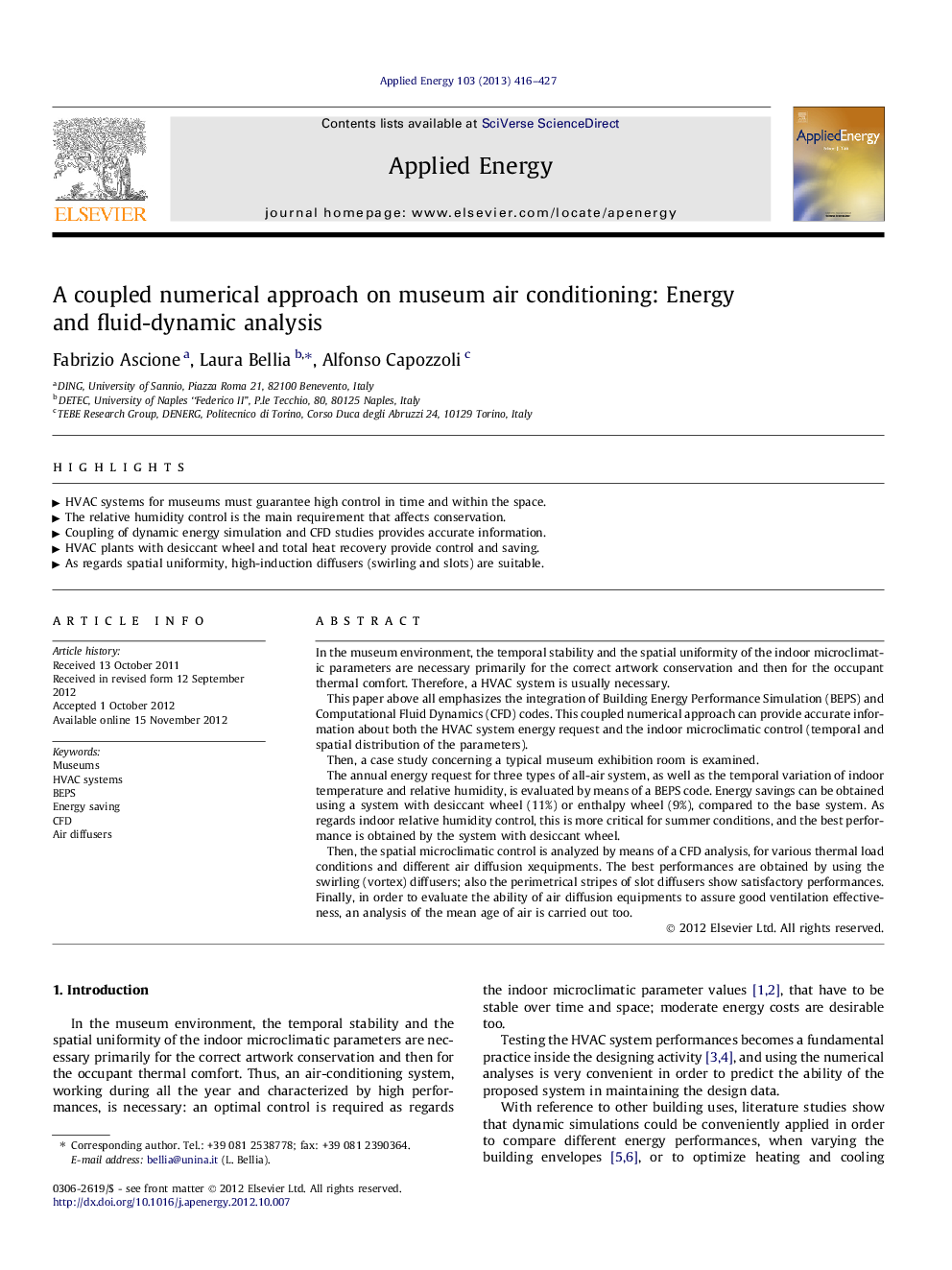| کد مقاله | کد نشریه | سال انتشار | مقاله انگلیسی | نسخه تمام متن |
|---|---|---|---|---|
| 243015 | 501915 | 2013 | 12 صفحه PDF | دانلود رایگان |

In the museum environment, the temporal stability and the spatial uniformity of the indoor microclimatic parameters are necessary primarily for the correct artwork conservation and then for the occupant thermal comfort. Therefore, a HVAC system is usually necessary.This paper above all emphasizes the integration of Building Energy Performance Simulation (BEPS) and Computational Fluid Dynamics (CFD) codes. This coupled numerical approach can provide accurate information about both the HVAC system energy request and the indoor microclimatic control (temporal and spatial distribution of the parameters).Then, a case study concerning a typical museum exhibition room is examined.The annual energy request for three types of all-air system, as well as the temporal variation of indoor temperature and relative humidity, is evaluated by means of a BEPS code. Energy savings can be obtained using a system with desiccant wheel (11%) or enthalpy wheel (9%), compared to the base system. As regards indoor relative humidity control, this is more critical for summer conditions, and the best performance is obtained by the system with desiccant wheel.Then, the spatial microclimatic control is analyzed by means of a CFD analysis, for various thermal load conditions and different air diffusion xequipments. The best performances are obtained by using the swirling (vortex) diffusers; also the perimetrical stripes of slot diffusers show satisfactory performances. Finally, in order to evaluate the ability of air diffusion equipments to assure good ventilation effectiveness, an analysis of the mean age of air is carried out too.
► HVAC systems for museums must guarantee high control in time and within the space.
► The relative humidity control is the main requirement that affects conservation.
► Coupling of dynamic energy simulation and CFD studies provides accurate information.
► HVAC plants with desiccant wheel and total heat recovery provide control and saving.
► As regards spatial uniformity, high-induction diffusers (swirling and slots) are suitable.
Journal: Applied Energy - Volume 103, March 2013, Pages 416–427